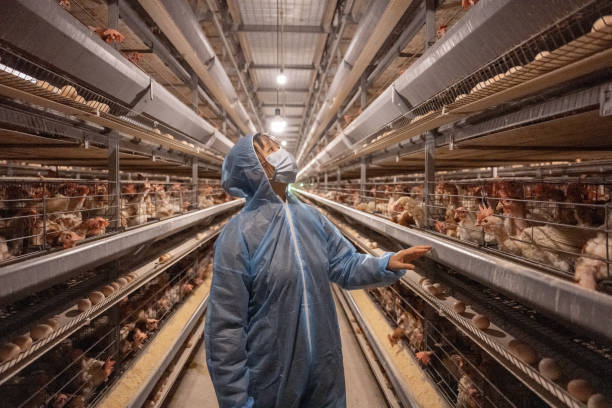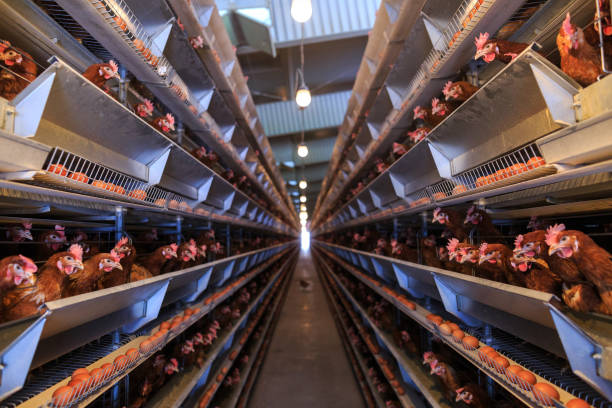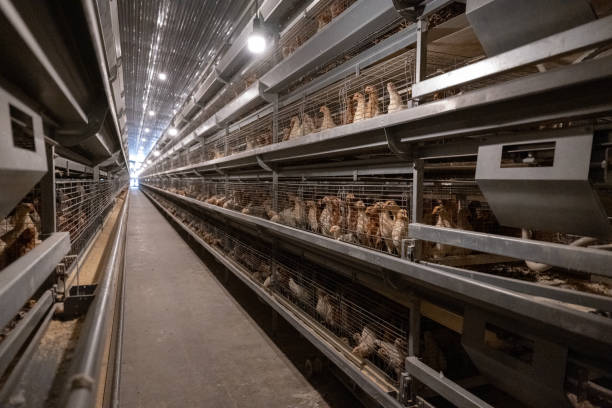
Building a Successful Layer Farm in Uganda: The Role of Battery Cages
Building a Successful Layer Farm in Uganda: The Role of Battery Cages
Uganda’s poultry industry is on the rise, driven by increasing demand for eggs and chicken meat. For aspiring and established poultry farmers in Uganda, building a successful layer farm requires careful planning, strategic investment, and the adoption of efficient farming practices. While various factors contribute to profitability, the choice of housing system plays a crucial role. Battery cages, often debated, can significantly impact productivity, efficiency, and ultimately, the success of a layer farm in the Ugandan context. This article dives deep into the role of battery cages in building a thriving layer farm in Uganda, exploring their advantages, disadvantages, best practices, and how they contribute to overall profitability.
Understanding the Ugandan Poultry Landscape
Before delving into the specifics of battery cages, it’s essential to understand the current state of the Ugandan poultry industry. Uganda has a significant appetite for eggs and poultry, fuelled by a growing population and increasing urbanization. This demand presents a valuable opportunity for entrepreneurs looking to enter or expand their poultry farming operations. Local breeds are common, but the increased adoption of high-yielding hybrid breeds underscores the need for modern housing and management techniques to maximize potential from improved genetics.
Traditional farming methods, such as free-range systems, are still prevalent, especially in rural areas. However, these systems often suffer from low productivity, high mortality rates, and susceptibility to diseases. To meet the growing demand and compete effectively, farmers are increasingly turning to more intensive farming practices, including the use of battery cages.
What are Battery Cages?
Battery cages are a housing system commonly used in poultry farming for laying hens. They consist of rows of small, wire mesh cages, typically arranged in tiers, where each cage houses several hens. The design allows for efficient space utilization, easier egg collection, and improved hygiene compared to floor-based systems.
Benefits of Battery Cages for Ugandan Layer Farms
Several compelling advantages make battery cages a viable option for Ugandan farmers aiming to build successful layer farms:
Increased Egg Production: Battery cages provide a controlled environment that minimizes stress factors and maximizes egg production. Hens are protected from predators, extreme weather conditions, and social hierarchies that can lead to pecking and competition for resources. In a controlled environment, hens are more likely to lay consistently and at a higher rate. The uniform access to feed and water, ensured by cage design, eliminates competition and allows all hens to reach their potential. In Uganda, where climate variability can significantly impact poultry production, the environmental control offered by battery cages can be particularly beneficial.
Improved Feed Conversion Ratio: One of the most significant advantages of battery cages is the improved feed conversion ratio. In cage systems, hens have limited movement, requiring less energy for activity and more energy for egg production. The feed is typically provided in troughs within the cages, minimizing wastage and ensuring that each hen receives an adequate amount. This translates to lower feed costs per egg produced, enhancing overall profitability. Considering that feed accounts for a substantial portion of the operational costs in poultry farming, the efficiency gains from battery cages provide a significant advantage.
Reduced Disease Outbreaks: Battery cages facilitate better hygiene management, which contributes to reduced disease outbreaks. The wire mesh floors allow droppings to fall through, preventing hens from coming into contact with their waste. This reduces the risk of coccidiosis, a common parasitic disease in poultry. Cleaning and disinfection are also easier in caged systems, further minimizing the spread of pathogens. In Uganda, where access to veterinary services and medications can be limited in some areas, the preventative benefits of battery cages against diseases are particularly valuable.
Easier Egg Collection: Egg collection is simplified in battery cage systems. Eggs roll out of the cage onto a collection tray, making harvesting quick and efficient. This reduces the risk of egg breakage and contamination, maximizing the number of marketable eggs. The ease of egg collection also translates to labor savings, benefiting both small-scale and large-scale farms.
Better Manure Management: The design of battery cage systems allows for efficient manure management. Droppings accumulate beneath the cages and can be easily removed manually or mechanically. The separated manure can be processed into fertilizer or biogas, creating an additional revenue stream for the farm. Proper manure management also contributes to improved farm hygiene and reduces the risk of environmental pollution.
Enhanced Biosecurity: Battery cage systems allow for better biosecurity measures. It is easier to control access to the hens and prevent the introduction of diseases from outside sources. The enclosed environment also reduces the risk of predation by wild animals. In Uganda, where avian influenza and other poultry diseases can pose a significant threat, enhanced biosecurity is crucial for protecting the health and productivity of the flock.
Optimized Space Utilization: Battery cages maximize space utilization, allowing farmers to house a larger number of hens in a given area compared to floor-based systems. This is particularly important for farmers with limited land resources. The multi-tiered design of battery cages effectively utilizes vertical space, increasing the stocking density and overall productivity of the farm.
Disadvantages of Battery Cages and Mitigation Strategies
While battery cages offer numerous advantages, it’s essential to acknowledge their potential drawbacks and implement strategies to mitigate them:
Animal Welfare Concerns: One of the main criticisms of battery cages is related to animal welfare. Critics argue that the limited space restricts natural behaviors, such as wing-flapping, dust bathing, and nesting. This can lead to stress, frustration, and behavioral problems in hens.
Mitigation Strategies: While traditional battery cages may raise welfare concerns, enriched cages and colony cages offer improved living conditions. Enriched cages provide more space, perches, nesting areas, and scratching pads, allowing hens to express their natural behaviors. Colony cages house larger groups of hens in a more open environment, promoting social interaction. Even with standard cages, ensure that the stocking density adhere to best practice and provide environmental enrichment aids such as pecking blocks. Proper ventilation and lighting are vital for hen wellbeing.
Skeletal Problems: The limited movement in battery cages can increase the risk of skeletal problems, such as osteoporosis, in hens.
Mitigation Strategies: Supplementing the diet with calcium and vitamin D can help strengthen bones and reduce the risk of skeletal problems. Ensure that the feed is properly formulated to meet the hens’ nutritional needs.
Feather Pecking: Crowded conditions in battery cages can sometimes lead to feather pecking, where hens peck at each other’s feathers, causing injuries.
Mitigation Strategies: Maintaining proper stocking density, providing adequate lighting, and ensuring a balanced diet can help prevent feather pecking. Beak trimming, a controversial practice, can also be used to reduce the severity of feather pecking. But be aware of the ethics surrounding this, it is vital that the beak trimming is done correctly and humanely.
Behavioral Restrictions: Battery cages can restrict natural behaviors such as foraging, dust bathing, and free movement, which can lead to stress.
Mitigation Strategies: Even in battery cage systems, provide opportunities for hens to engage in some natural behaviors. Providing pecking blocks, hanging ropes and making sure hens have all their needs met ensures they maintain high welfare.
Best Practices for Using Battery Cages in Uganda

To maximize the benefits of battery cages and minimize their drawbacks, Ugandan farmers should adhere to the following best practices:
Choose the Right Cage System: Select a cage system that is appropriate for the farm’s size, budget, and management capabilities. Consider enriched cages or colony cages for improved animal welfare. A supplier such as Livi Machinery can offer a range of options to help farmers choose the right fit for their needs. Look for cages constructed from quality materials, corrosion-resistant and designed for optimal ventilation and hygiene.

Ensure Proper Ventilation: Adequate ventilation is crucial for maintaining air quality and preventing respiratory diseases in battery cage systems. Install ventilation fans to remove stale air and introduce fresh air. Ensure that the ventilation system is properly designed and maintained to provide adequate airflow throughout the poultry house.
Provide Adequate Lighting: Proper lighting is essential for stimulating egg production and maintaining hen health. Use appropriate lighting fixtures and set a consistent lighting schedule to regulate the hens’ reproductive cycles. The right intensity and duration of light can significantly impact egg production.
Maintain Strict Hygiene: Regular cleaning and disinfection are essential for preventing disease outbreaks in battery cage systems. Remove droppings regularly and clean the cages thoroughly to eliminate pathogens. Implement a strict biosecurity program to prevent the introduction of diseases from outside sources.
Provide a Balanced Diet: Ensure that hens receive a balanced diet that meets their nutritional needs. Work with a nutritionist to formulate a feed ration that provides adequate protein, energy, vitamins, and minerals. The quality of feed directly impacts egg production, hen health, and overall profitability.
Monitor Hen Health: Regularly monitor the health of the hens and take prompt action to address any signs of illness. Implement a vaccination program to protect against common poultry diseases. Early detection and treatment of diseases can prevent significant losses.
Proper Manure Management: Implement a proper manure management system to minimize environmental pollution and create a valuable fertilizer product. Properly manage manure to prevent environmental issues and maximize profit through value added fertilizer products.
Train Farm Workers: Properly train farm workers on all aspects of poultry management, including cage cleaning, feeding, egg collection, and disease prevention. Well-trained workers contribute to efficient farm operations and improved hen welfare.

Seeking assistance from professionals, such as poultry veterinarians, is always a valuable investment for a successful poultry farm.
The Future of Layer Farming in Uganda: Balancing Productivity and Welfare
The Ugandan poultry industry is evolving, with increasing emphasis on balancing productivity and animal welfare. While battery cages have proven to be an efficient and cost-effective housing system, there is a growing trend towards enriched cages and alternative systems that offer improved living conditions for hens.
Ultimately, the success of a layer farm in Uganda depends on a holistic approach that considers both economic viability and ethical considerations. By adopting best practices, investing in appropriate cage systems, and prioritizing hen welfare, Ugandan farmers can build thriving and sustainable layer farms that contribute to the growth of the poultry industry and the nation’s food security. As the industry evolves, continuous learning and adaptation will be key to staying competitive and meeting the changing demands of consumers and society.
Livi Machinery’s Role in Supporting Ugandan Poultry Farmers
Livi Machinery plays a crucial role in supporting Ugandan poultry farmers by providing high-quality, durable, and cost-effective battery cages and other poultry equipment. Livi Machinery understands the specific needs of Ugandan farmers and offers customized solutions to meet their requirements. By investing in Livi Machinery’s products, Ugandan farmers can enhance their productivity, improve their efficiency, and build successful layer farms that contribute to the growth of the poultry industry in Uganda.
